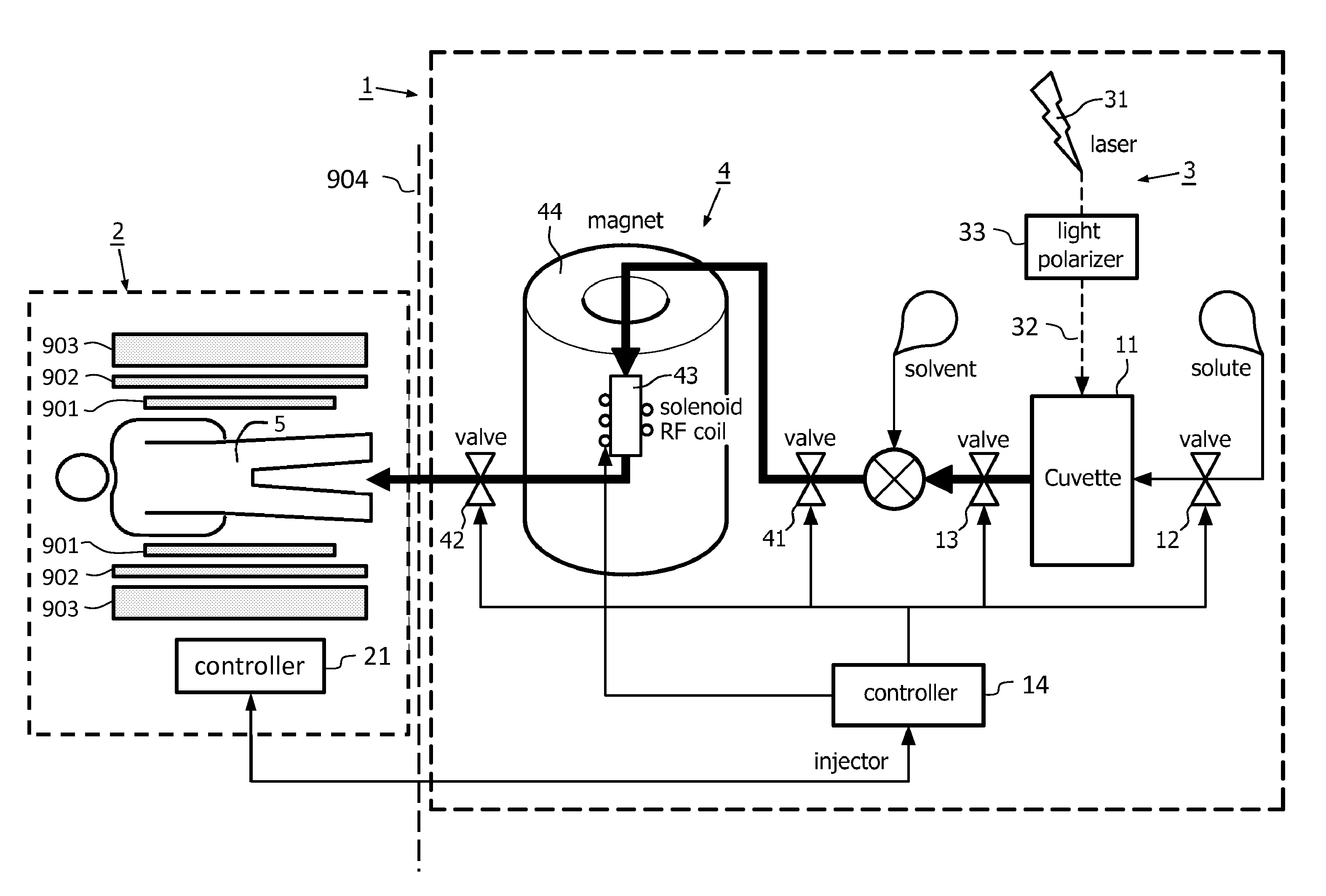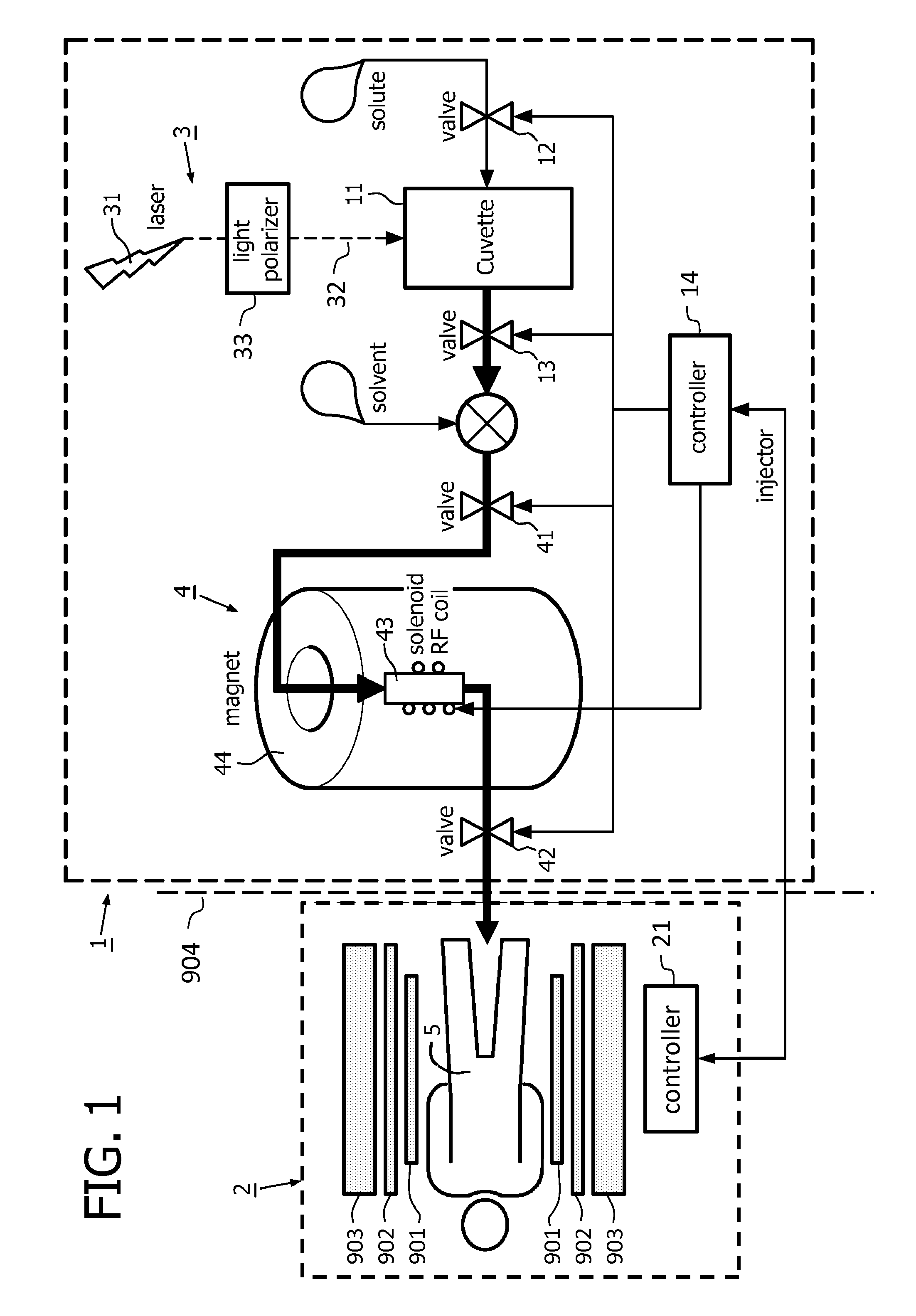Apparatus and method for dispensing a hyperpolarized fluid
a technology of contrast agent and fluid, applied in the direction of magnetic variable regulation, instruments, measurement using nmr, etc., can solve the problems of limited application to endoscopic, invasive and interventional applications, and achieve the effect of avoiding the effects of spatial inhomogeneity, reducing limitations, and being easy to achiev
- Summary
- Abstract
- Description
- Claims
- Application Information
AI Technical Summary
Benefits of technology
Problems solved by technology
Method used
Image
Examples
Embodiment Construction
[0035]FIG. 1 shows a schematic representation of a dispenser 1 of the invention in co-operation with a magnetic resonance examination system 2. The chamber 11 of the dispenser 1 is formed as a cuvette 11. The photonic hyperpolarisation system 3 includes a laser 31 and a light polariser 33 which forms the OAM photonic beam 32 that is endowed with orbital angular momentum. This OAM photonic beam is directed into the cuvette 11 which contains the source-compound in the form of the solute, so that in the cuvette the hyperpolarised source-compound is formed. This hyperpolarised source-compound is then fed to the polariser transfer system 4. In the polariser transfer system 4, the hyperpolarisation of the solute source-compound is transferred, e.g. by nuclear polarisation transfer, to the recipient-compound that is added as a solute to the solvent. The hyperpolarised solution with the hyperpolarised solute recipient-compound is then applied to a dispensing unit (not shown) to be administe...
PUM
 Login to View More
Login to View More Abstract
Description
Claims
Application Information
 Login to View More
Login to View More - R&D
- Intellectual Property
- Life Sciences
- Materials
- Tech Scout
- Unparalleled Data Quality
- Higher Quality Content
- 60% Fewer Hallucinations
Browse by: Latest US Patents, China's latest patents, Technical Efficacy Thesaurus, Application Domain, Technology Topic, Popular Technical Reports.
© 2025 PatSnap. All rights reserved.Legal|Privacy policy|Modern Slavery Act Transparency Statement|Sitemap|About US| Contact US: help@patsnap.com



